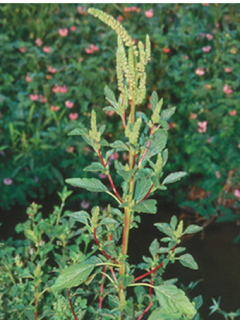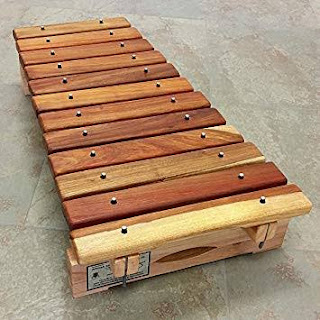ABANYALA BA KAKAMEGA: Indegenious vegetable.
In Masakha et al 2018 Abanyala ba Kakamega: A Historical and Cultural Perspective, various names of various vegetable are highlighted. The following lists more of the vegetables.
The names of the vegetable in Olunyala.
- Amakalaba (bean leaves or Phaseolus vulgaris.) They are eaten when other vegetables become scarce. The young leaves are usually the best.
- Amakhaukhau-
- Amasafu ka amapwoni- they were picked, wilted in the sun and cooked with omukherekha mixed with other vegetable.
- Amasafu ka enduma. Arrow root leaves are cooked by mixing with other vegetables. They have some bitter taste hence mixed with other vegetables to reduce the bitter taste.
- Amasafu ka emioko. The young cassava leaves are picked and thoroughly cooked with other compatible vegetable. The leaves' mid ribs are removed.
- Amasafu ka omukhayikwe (kalabaya)- leaves and seeds of marama beans plant. The paste from the marama seed was called esikalabaya and eaten by men for erectile issues.
- Efwafwa (Commelina spp.) This is commonly eaten when mixed with other compatible vegetables such as emicho, esusa, omuchere, esikhubi, akhafululu and esingayangaya.
- Efwokoyo- it is a type of esingayangaya.
- Ekhubi (Vigna unguiculata). Abanyala, just like Abasamia, do not call it esikhubi since esikhubi is different. It usually formed the main vegetable into which others are added. Harvesting can be done by uprooting the young stems in a process called okhukhulisira, by cutting off the young twigs from the stem in a process called okhukhalisira and by harvesting old leaves in a process called okhulolelera. Its roots are poisonous. Cooking could be by okhufutuma or okhukherekha. It could also be picked dried and stored.
- Emboka- the pigweed of the Amaranthus spp. They are many types generally clustered as emboka esacha if they have thorns and at times a red root; and varieties of the thornless ones called emboka ekhasi. Those with thorns are usually picked when young.
- Emicho (Crotalaria spp.)There are two major types called emicho emisacha that is small bitter tasting and emicho emikhasi that has larger non bitter leaves. It is usually mixed in other vegetables such as cowpeas or cooked alone. This vegetable can be mixed with enderema, cowpeas, bean leaves and pumpkin leaves.
- Enderema (Basella alba). It is common along river banks and at times the stem is planted by burying it among other perennial crops for creeping purposes. It is mixed with other vegetables such as esuusa, emicho, esingayangaya and esikhubi. It is said to be good for lactating mothers
- Eng'oli embalayo- species of the green grams variety. Both leaves and seeds were eaten

Eng'oli Embs - Eng'oli esacha- they are almost the same to embalayo. The difference is the black colour of the seeds. Both leaves and seeds are eaten.

Eng'oli Embalayo - Esaka (Cleome gynandra) Esaka can be mixed with namasaka, esakasaka, namufwonola, etooto, emboka, esiriecho and namulwa. The roots of esaaka can also be chewed to relieve stomachache while the raw leaves are added to other herbs to reduce labour pains and menstration crumbs.

Esaka - Esifululu- red flower and dark green leaf. Used when vegetable became scarce. It was believed to stop stomachache when eaten. It reducing omwololo (nosebleeding) when eaten regularly.

Esifululu - Esikhanukhanu-
- Esikhubi- it is a wild cowpeas. It is the creeping, deeply rooted types which is drought resistant and are preferred for their leaves that require long time of boiling.
- Esikhubayeka (Vigna membranacea) - This vegetable resembles ekhubi but with an extensive climbing habit. The leaves have three leaflets and each leaflet usually with side lobes. Its flowers are blue, tinged purple. Has narrow fruit pods.
- Esingayangaya- purslane. Usually mixed with efwafwa, omuchere, ekhubi, emichi and muchunde.

Esingayangaya - Esinyolonyolo-
- Esiriecho (Erythrococca bongensis) - This is a small shrub found in bushland and roadsides. It saves a lot during dry season.
- Esusa- pumpkin leaves or Cucurbita spp. There are three types. We have one called esusa emali (Cucurbita moschata) which has dark green leaves with white strips. The other two are called esuusa elafu or esusa esebe (esebebe) have light green leaves only distinguished from each other by the shape of their pumpkins. These two are esusa elafu esacha, whose pumpkin is long (cocurbita maxima) and another called esusa elafu ekhasi (Cucurbita ficifoha). Harvesting of leaves is done by picking the leaves with their stalks (emikhondi). Young soft leaves towards the end of the vine are plucked then prepared by removing tough sisal-like stuff by a process called okhunyoosa. Flowers can also be eaten. The leaves are then cut into pieces ready for cooking. The cooking can be done by okhufutuma or by using omukhelekha. It can be mixed with omuchere, emboka, ekhubi, emicho, enderema, esiriecho, esingayangaya or etooto.

Esusa elafu and esusa emali. - Etolotolo- leaves from yams
- Etooto (Amaranthus sp). There are many species of this that were categorised as either etooto elafu for having red coloration or etooto emali for being green. It is majorly mixed with the bitter vegetable to reduce the bitterness.

Varieties of etooto elafu and etooto emali - Namasaka- they are of various types. Namasaka ekhakhasi large leaves (Solanum scabrum) and Namasaka esacha (Solanum mericanum) which is slightly bitter with small black fruit. Usually cooked mixed with esaka, esiriecho, esuusa, etooto, emboka etc Orange fruited type (S. tvillosum) which is introduced to the area. This vegetable has bitter leaves. It is cooked using okhufutuma.
- Lusero (Brassica carinata). It resembles sukuma wiki but slightly small leaves. It is not cooked with omukhelekha. It was a delicacy when cooked with animal fat.

Lusero - Makowe- blackjack. Eaten when there is scacity of vegetable.
- Muchunde – stinging nettle species. This vegetable comes out as a weed. Extremely nutritious and medicinal.
- Namulwa- usually medicinal and mixed in other vegetables.
- Nasikumba-
- Omuchere (Corchorus spp.) A usually erect branched herb. Leaves broadly have serrated margins, flowers are yellow, fruits are slender capsules splitting to four or three halves. We have omuchere musaacha with the reddish stem or leaves and omuchere mukhasi with large green leaves.
Terms used when dealing with vegetable.
- Embondioko- flat wide seeds from pumpkins usually roasted, made into paste and added in men's vegetable.
- Eng'oli- slightly bigger seeds than owumwo.
- Epwoka- cooking vegetable quickly without too many ingredients.
- Khumamukha- the scotching effect on vegetable. It was believed that menstrating women could make vegetable be scotched if they go to pick.
- Okhuchola- removing vegetable leaves from stalk.
- Okhukhacha- using a lot of vegetable to eat very little ugali.
- Okhukhulilirisa- harvesting by thinning vegetable
- Okhumwa- planting small seeds.
- Okhunonera- using little vegetable to eat a lot of ugali.
- Okhunyosa- removing fibre-like chaff from pumpkin leaves during preparation
- Okhwaha- harvesting leaves for vegetables
- Okhwomola- putting vegetable on serving plate.
- Owumwo- small vegetable seeds.
- Esilundu- garden where vegetable is grown.
- Omukherekha - this is filtrate collected from specific plant ash. The major ash used to make omukherekha was that which high alkaline level which was from legumes such as beans thrash,, old pumpkin leaves and green gramms (engoli esaacha), simsim, groundnut or others such as banana peelings, maize cobs, millet chaff, sorghum head chaff and special river reeds called amasere. Also, goat droppings were used by some people. It was made using a special perforated small pot called olukherekho. The leaves of pumpkin plant or mesh of spear grass was used as the filter. It makes the food tender, changes the food's colour, adds flavour, improves taste, makes vegetable slimy, preserves meal for longer time, reduces stomach's rumbling effect, reduced behaviour of eating soil among pregnant women, makes bones and muscles strong and is said to purify body cells. Apart from it meal related use, it is applied on burn wounds. Vegetable cooked with omukherekha are emicho, esusa, ekhubi, omuchunde, enderema, makowe, amasafu ka emioko, amasafu ka enduma, esingayangaya, esikhubayaka and efwafwa. Vegetable cooked without omukherekha is said to be have been cooked by a process called okhufutuma.
- Omunyu mufume- this is solid salt made from the liquid extracted from special reeds found in rivers. It is the solid form of omukherekha. Its taste is slightly different from omukherekha. In fact, it is a special solidified omukherekha from reeds. The reeds are collected, washed and dried for three days. They are slow heated until they charcoal up. The ash is mixed with hot water and left to filtrate. The filtrate is then heated to evaporate the water leaving the salt. It is usually kept in banana leaves. Said to be good for hypertension, quick healing of wounds and strong bones. It was believed to enhance blood flow and that is why it was not put in meal for the initiate.
- Amabere mayu- fresh milk. Usually kept in a guard.
- Amabere mawowu- sour milk.
- Ehonda- solidifies cream from milk.
- Esitieni- paste from beans.
- Omuniobo- paste from amaito (groundnut)
- Omutekete- paste from simsims
- Amasalulule- fat from animals.
- Omuchalwa- preserved animal blood.











Great resource.
ReplyDeleteWateka poo owefwe.